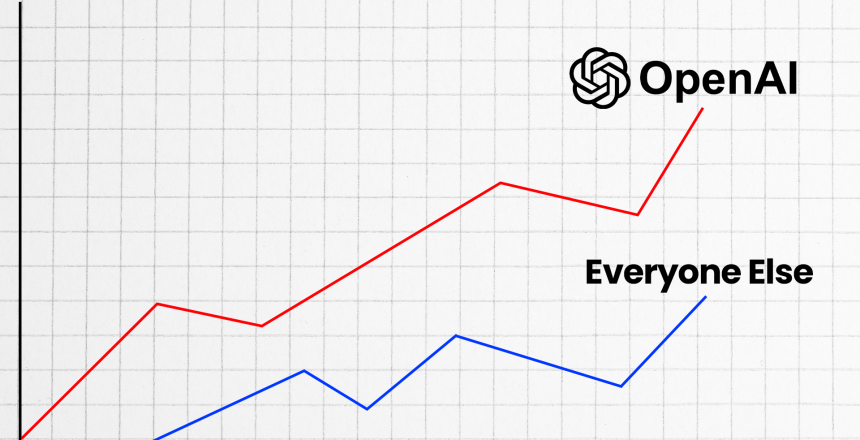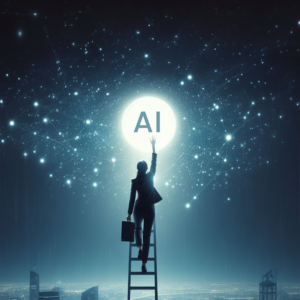In the rapidly evolving world of artificial intelligence, few companies have captured the imagination and ignited debate quite like OpenAI. With their groundbreaking language model, ChatGPT, they have firmly established themselves as a pioneer and market leader. However, as tech behemoths like Google and Microsoft double down on their AI efforts, the question arises: Can OpenAI maintain its dominance, or will they eventually be surpassed by their deep-pocketed competitors?
The Case for OpenAI’s Continued Reign
OpenAI’s meteoric rise can be attributed to several key factors that have propelled them to the forefront of the AI revolution. Firstly, their first-mover advantage and early entry into the market have allowed them to build a strong brand recognition and loyal user base. As corporations integrate OpenAI’s offerings into their workflows, there is often reluctance to switch to competitors’ products, providing OpenAI with a significant edge.
Moreover, OpenAI’s focused and agile approach sets them apart from larger, more bureaucratic organizations. As a smaller and more specialized company, they can innovate faster, iterating and adapting to market demands with greater speed and precision. This nimbleness, combined with their laser-focus on AI products and services, allows them to stay ahead of the curve.
Perhaps most crucially, OpenAI’s substantial investment from Microsoft and their unwavering mission to achieve artificial general intelligence (AGI) have provided them with the resources to train larger, more powerful models. Their ability to scale and outperform competitors in terms of computational resources is a significant competitive advantage that cannot be overlooked.
The Challengers on the Horizon
However, the playing field is far from static, and OpenAI faces formidable challenges from tech titans like Google and Microsoft. These companies boast immense talent pools and unparalleled computational resources, allowing them to compete effectively in the AI arms race. Additionally, their dominance in services like Gmail, search, and advertising provides them with a structural advantage in terms of data collection – the lifeblood of AI systems.
Moreover, a significant breakthrough in AI technology, such as a new paradigm beyond transformer models, could level the playing field. While OpenAI has been at the forefront of current advancements, companies like Google and Microsoft have the resources to invest heavily in cutting-edge research, potentially leapfrogging OpenAI’s current technological lead.
Furthermore, the rise of open-source AI models, such as Stable Diffusion and Llama, has demonstrated the power of collaborative efforts in accelerating progress. If OpenAI fails to adapt and embrace this trend, they risk being disrupted by a collective effort that harnesses the combined strength of multiple players.
Striking the Right Balance
As the debate rages on, it is essential to consider the counterarguments and potential rebuttals. Critics argue that OpenAI’s obsession with safety and ethical considerations may hinder their ability to iterate and release products as quickly as their competitors. However, this approach could also be viewed as a long-term strength, ensuring public trust and widespread adoption of their technology.
Conversely, while companies like Google and Microsoft have immense resources, their size and bureaucracy may slow down their ability to innovate effectively. However, these giants could potentially counter this challenge by spinning off or acquiring smaller, more agile teams dedicated to AI innovation.
The Future of AI Leadership
As the AI landscape continues to evolve at a breakneck pace, predicting the long-term leader becomes an increasingly complex endeavor. OpenAI’s first-mover advantage, focused approach, and investment in scaling are undoubtedly significant strengths. However, the talent and resources of tech giants like Google and Microsoft, combined with potential breakthrough innovations and collaborative efforts, pose formidable challenges.
Ultimately, the company that can strike the right balance between innovation, safety, and adaptability may emerge as the long-term leader in this highly competitive and rapidly evolving field. The race for AI supremacy is far from over, and the future promises to be an exhilarating and unpredictable journey.
As we stand on the precipice of an AI-driven future, one thing is certain: the companies that can harness the power of this transformative technology while navigating its complexities and ethical implications will shape the world for generations to come. Whether OpenAI remains the undisputed leader or succumbs to the relentless pursuit of its competitors remains to be seen. However, one thing is clear – the AI revolution is just beginning, and the world eagerly awaits the next groundbreaking development that will propel us into a new era of human-machine synergy.
Want to stay up to date on technology relevant to your business? Follow Epimax on social media and check out our other blog articles.














